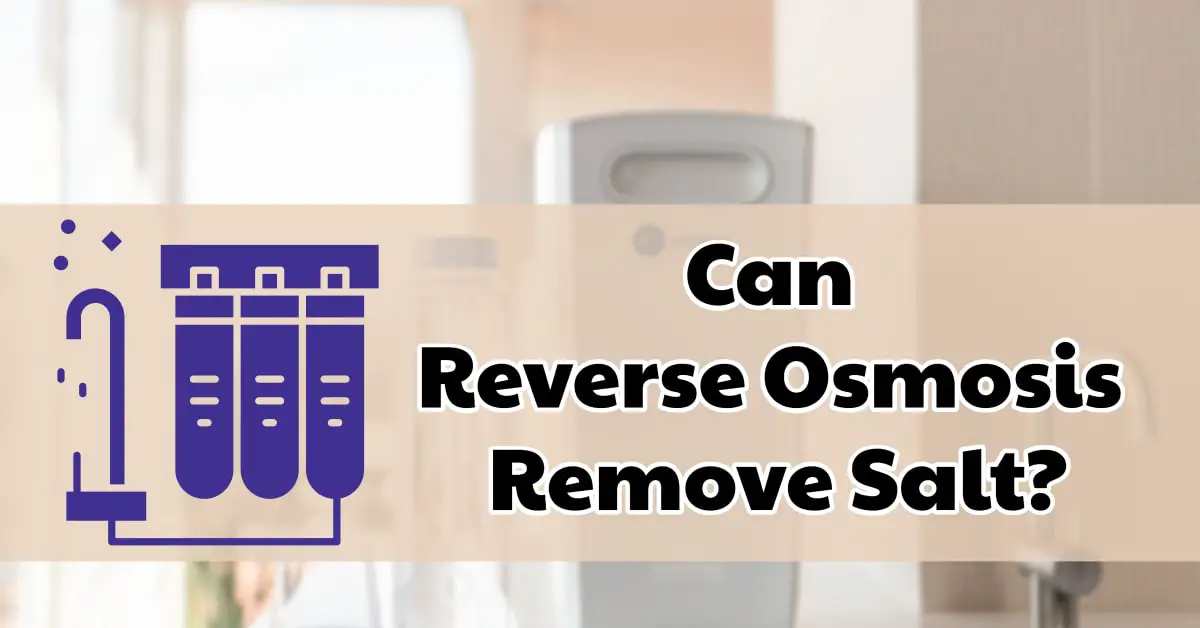Can Reverse Osmosis Remove Salt?
Reverse osmosis is a useful process for separating different substances, including salt, from water. It is used in a variety of industries to purify water, from large-scale industrial facilities to residential homes.
Reverse osmosis can be an effective method for removing salt from water, but many people may not understand how the process works or what it takes to make it successful.
In this blog post, we will dive into the specifics of reverse osmosis, including what it is, how it works, and how it can be used to remove salt from water. We will also discuss the benefits of using reverse osmosis to desalinate water, as well as some of the drawbacks to this process.
By the end of this post, you should have a better understanding of reverse osmosis and how it can be used to remove salt from water.
How reverse osmosis removes salt?
Reverse osmosis is a process by which salt and other contaminants are removed from water. The process works by forcing the water through a semipermeable membrane, which allows the water molecules to pass through, but keeps the salt and other contaminants behind.
This separation process can be used to remove other impurities as well, such as bacteria, viruses, and heavy metals. The membrane is usually made of an ultra-thin film of polyamide, and can remove up to 99% of salt and other contaminants.
Reverse osmosis systems are becoming increasingly popular, as they are very efficient and able to produce large quantities of clean, salt-free water.
Benefits of removing salt
Removing salt from water has a range of benefits.
- It can help improve the taste of the water, making it more pleasant to drink.
- It can reduce the risk of water contamination, as salt can act as a fertilizer for bacteria and other microorganisms.
- Reducing salt levels can help reduce the risk of high blood pressure or health complications related to high sodium levels.
- It can help improve the efficiency of filtration systems, as salt can clog and corrode pipelines.
- The removal of salt can help reduce limescale buildup that can occur in pipes, appliances, and fixtures.
- Removing salt can help reduce the amount of damage done to the environment by salt runoff, as too much salt can be damaging to plant and animal life.
Advantages of using reverse osmosis to remove salt
- Cost effectiveness: Reverse osmosis is a cost-effective method for removing salt from water. It requires minimal maintenance and can be used for a long time, making it a good investment.
- High efficiency in removing salt and other contaminants: Reverse osmosis is highly efficient in removing salt and other contaminants from water. It can remove up to 99% of the salt in water, as well as other impurities such as bacteria, viruses, and chemicals.
- Widely available and easy to use: Reverse osmosis systems are widely available and easy to use. They can be purchased for home or industrial use, and they do not require any special skills or training to operate.
Limitations of reverse osmosis in removing salt
- Requires a consistent water source with sufficient pressure: Reverse osmosis requires a consistent water source with sufficient pressure to function properly. If the water pressure is too low, the reverse osmosis process may not be effective in removing the salt from the water.
- May produce wastewater that needs to be disposed of properly: The reverse osmosis process produces wastewater that contains the concentrated salt solution and other contaminants. This wastewater must be disposed of properly to avoid contaminating the environment.
- May not be effective in removing certain types of contaminants: While reverse osmosis is effective in removing most contaminants from water, it may not be effective in removing certain types of contaminants, such as certain types of bacteria and viruses.
Conclusion
In conclusion, reverse osmosis is an effective way of removing salt from water. It can be used to desalinate seawater and make it suitable for drinking, or to treat brackish water for other uses.
Reverse osmosis also removes other contaminants from water, so it is often used in industrial water treatment systems. With the right equipment and setup, reverse osmosis can be used to remove salt from water quickly and efficiently.
